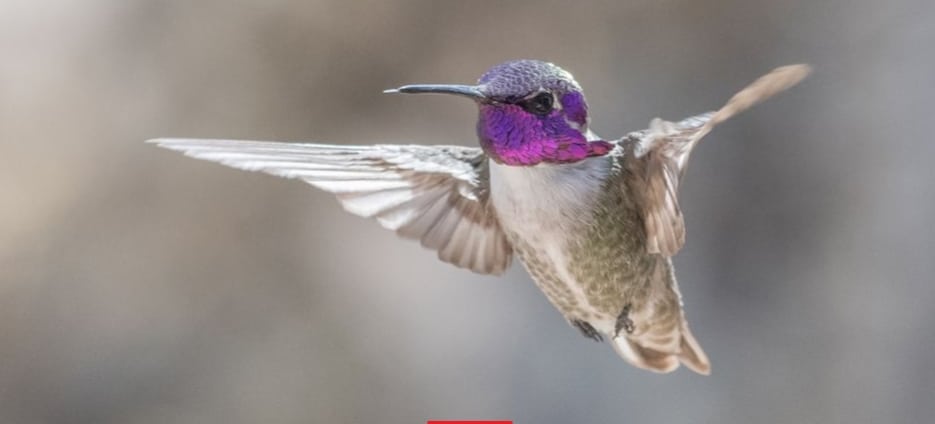
Scientists have discovered a rather unusual mating technique in male Costa’s hummingbirds, who attract potential mates by diving at a female’s side and producing a “song” with their tail-feathers that helps them further declare their intent.
In a study published Friday in the journal Current Biology, researchers from the University of California, Riverside described this mating process, which justifies why male Costa’s hummingbirds have often been spotted diving at high speeds and doing so at a female’s side, instead of in front of them. This, according to the Daily Mail, is in order to minimize the Doppler effect that takes place when males dive to impress females and end up “singing” by fluttering their tail-feathers, resulting in a more subtle approach. Science News also noted that the approach is noticeably different from how males of other hummingbird species attract would-be partners — by swooping over females.
While this technique might seem counterintuitive, as female hummingbirds gravitate toward males who can dive quickly, the researchers noted that male Costa’s hummingbirds mate in such a way so they could keep their proverbial cards close to their chests, purposely preventing unwanted females from knowing too much about their diving speeds. According to study co-author and UC Riverside assistant professor Christopher Clark, this gives males more freedom of choice when selecting a potential partner.
“By concealing their speed, males are not necessarily cheating, but instead have evolved this placement of trajectory out of female choice,” Clark explained.
In order to ensure that female Costa’s hummingbirds are made aware of a male’s mating attempts, males twist their tails upward, moving only half of their tail 90 degrees away from their bodies. It’s not sure why this is the case, but Clark speculated that it might be a result of anatomical limitations that stop males from completely twisting their tails while mating.
The researchers were able to make those observations about male Costa’s hummingbirds and their mating techniques with the help of an acoustic camera. Their methodologies also involved reading up on the different ways that hummingbird noises influence their speed and trajectory and studying the birds’ movements by performing wind tunnel experiments. According to the researchers, the main takeaway from these experiments was that it was hard to use the sounds Costa’s hummingbirds produce to predict the speed of their dives.
“Once I realized it wasn’t trivial for a scientist to measure, I realized it wouldn’t be trivial for a female to measure either,” said Clark.
According to Gizmodo, the new study is the first in what Clark hopes would be a series of several studies on hummingbirds and their mating conventions. At the moment, it’s still unsure how female Costa hummingbirds react to the “songs” performed by males with their tail-feathers, or what factors they take in consideration when assessing a potential mate’s worthiness.
